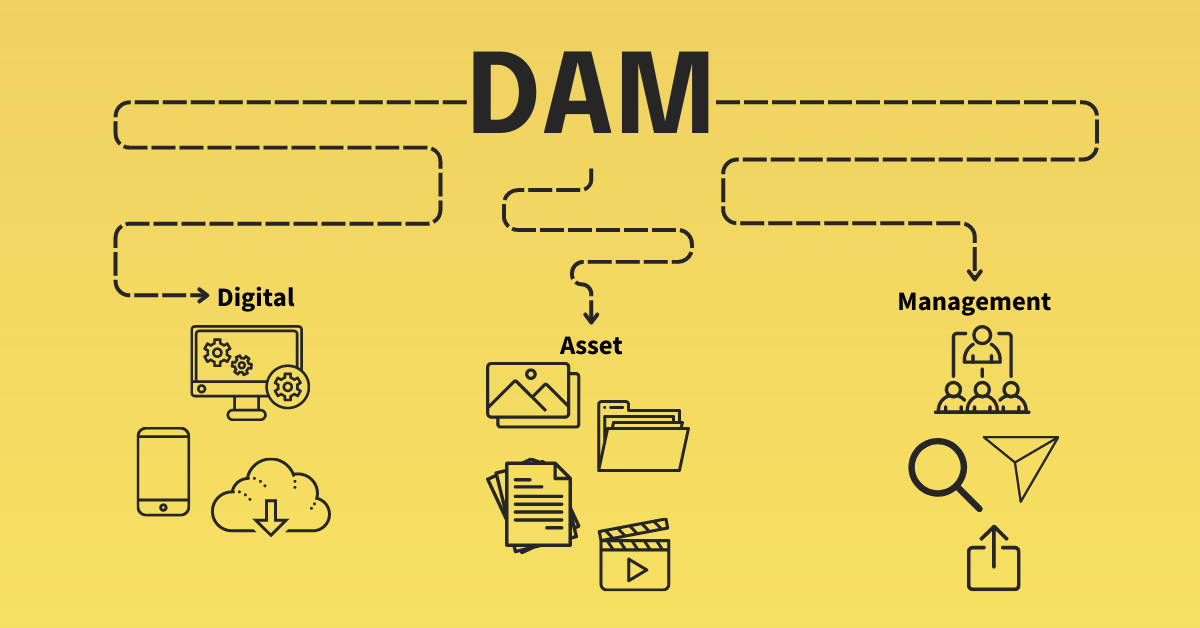How Digital Asset Management Helps Remote Work


Remote work has become more popular with organizations for years, and today, it's a critical need given changes stemming from COVID-19. We here at Image Relay have always been a distributed organization and find that it has many benefits. Without the time spent commuting, there is a better work/life balance, allowing employees the freedom they need for errands, health care appointments, childcare, and personal time. Those are the reasons we originally committed to the remote work structure. The lack of commute is also better for the environment, with less cars on the road. And for the company, money can be saved on renting office space.
Teams that work remotely will need a stack of tools to help be effective. For communication, there are tools like Slack, Zoom, GoToMeeting, and Google Hangouts. For collaboration, there are things like Google Docs and Sheets, Trello, and Google Drive. In this post, we will talk more specifically about file storage, and why Digital Asset Management systems are particularly helpful for remote teams.
What is Digital Asset Management?
Digital Asset Management (DAM) systems allow you to store, organize, and share many kinds of media including photography, video, audio, office documents, PDFs, Adobe files, and more. There are several key differences between DAM systems and cloud internet storage. One main difference is that you can associate contextual metadata, or information about the file. This helps to bring back proper search results when you have thousands of files, but it can also help with things like rights management because you can provide the context needed for someone to understand how and when to use a file.
Another key component of digital asset management is controlled access. A DAM will allow you to set many permission levels so that you manage what a user can see when they log in. It also allows you to differentiate between who can upload, edit metadata, view permissions and reports, download, and share. With a DAM you can be sure that your files are secure, and private files are not accidentally out where everyone can see them.
Finally, with a DAM, you have many different options to share. You can share out individual files, folders, and collections using the system. In many systems, you can create public facing pages that allow you to put files for anyone to see. You can also create embed links to images that you can serve directly to your website. These options allow you to forgo the clunky experience of having to download and email files, or load to another file transfer system from your network server.
How Does DAM Help Remote Teams?
Centralization
A Digital Asset Management system is an important tool in the remote work arsenal for a number of reasons. First, and perhaps foremost, a cloud-based DAM, such as Image Relay, will centralize all your digital content files in one place in the cloud. This means that they can be accessed from any computer in any location that has an internet connection. Many clients that we work with are moving off of a local network server to a DAM for just this reason.
When everything is stored on a central network server, it can only be accessed from the office. Even worse, many times files are stored on various CDs, thumb drives, or personal storage cloud storage like Google Drive, so it’s not even centralized in one place. Having everything stored on a DAM gives everyone easy to access files from anywhere.
Self-service
Another benefit for remote workers is that a DAM system provides self-service 24 hours a day, 7 days a week. When you work remotely, you can't shout across the office to your coworker to ask where the files are. You also don’t want to bombard them with emails or chat messages trying to find what you are looking for. You also might be working different hours than the traditional office worker, so flexibility is essential.
With a digital asset management system in place, you will always be able to find what you are looking for without relying on other people or office hours. Because of the metadata associated with each file, it is easy to search and refine your results. And access to the DAM is there any time you need it. Once you have your username and password, you are ready to go.
Sharing Content
As a remote worker, you will likely have to share many files with your colleagues - proofs, video, working files. This is certainly not exclusively a remote work problem, but you can’t just call someone over to look at your screen, or print them a copy of a brochure for them to review. Additionally, it can be challenging to email large files, or upload to a service like WeTransfer each time you want to share. A DAM will streamline the sharing process, and save you time in the process.
A digital asset management system should give you many ways to share files out to colleagues, clients, the press, or whoever else needs to see or use your files. Every DAM is a little different, but here at Image Relay we have three major ways to share. The first is with quick links, which allow you to share files or folders at the click of a button. You can also set whether you want those files to be downloaded or view only, have downloaders fill out their information, and set an expiration date.
The second way to share is with Collections. A collection allows you to curate content from around your library, add or subtract content over time, and add collaborators to help build the collection. Collections are a great way to share product launches, press releases and other important content in a neat and professional manner. Like quick links, you can customize your share options.
The final way we share content at Image Relay is with Public Portals. The Public Portal is a set of Collections or files that sit on the front page of your website. Anyone who has the URL can download or view these files, they do not need a username and login, and you do not need to send them anything. This is great for sharing frequently requested material, brand logos and design, and other popular content you want to share with the world.
Moving From a Local Server to a DAM
Once you have made the decision to move to a DAM, you will want to work closely with your DAM provider on the transition. They should be able to walk you through all of the steps to make the change as smooth as possible. They should also provide ample training for you and your users.
How long or how challenging the implementation of your new system can take depends on a lot of factors. These include how many files you intend to upload, the kind of metadata you want to add, how many users you will be adding, and how quickly you want to launch. Another major factor is how much time you have to commit to setting up the DAM, whether it’s all day, an hour a day, or a few hours a week.
The clients that we work with take anywhere from a week to 6 months to launch, depending on their needs. But the DAM provider can generally follow the pace that the client sets. It is also often easier to move from a network server however than to transfer from one DAM to another DAM. Starting fresh, and being able to add new metadata to your system will make a world of difference for your users looking for files.
Having a DAM not only makes things easier for remote workers, it can also make things better for those traveling for work, those who need to grab a file after hours, and even people in the office! The factors that make DAM useful to remote workers can also make it easier for everyone else. Having everything centralized, easily accessible at any time of day, and simple to search is a benefit to anyone who deals with digital files on a regular basis.
If you would like to learn more about how Image Relay can help your team with remote work, please reach out.
Photo by Christin Hume on Unsplash



